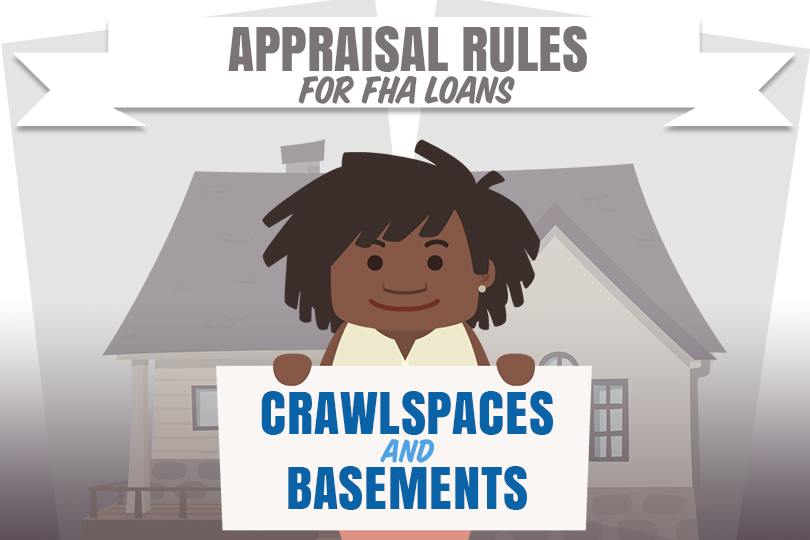FHA Appraisal Rules: Crawlspaces and Basements

The appraisal seems like an “inspection” to some, but it’s nowhere near as complete as a home inspection. But FHA appraisal rules do include specific directions for the appraiser including what to look for in specific areas of the home including the crawlspace and the basement where applicable.
Many of these issues are detectable during the appraisal process--excessive water, cracked walls, and other issues may be readily apparent at a glance. Others may not.
These requirements are found in HUD 4000.1, starting on page 490. In this section, the appraiser is instructed to review the basement for issues related to leaks, foundation issues, and much more.
Appraising the Basement
When it comes to specific guidelines for reviewing the basement? If problems are found this portion of the FHA mortgage loan rules says clearly, "The Appraiser must notify the Mortgagee of the deficiency...if the basement is not free of dampness, wetness, or obvious structural problems that might affect the health and safety of occupants or the soundness of the Structure."
In such cases, corrections may be noted if repairing them is feasible. In cases where a correction or repair isn’t feasible, it’s entirely likely the home may not be suitable for an FHA mortgage.
And the state of the walls and floor aren’t the only areas of concern.
FHA appraisal requirements for the basement include some instructions to the appraiser about reviewing sump pumps. The Appraiser must note a deficiency in cases where the pump “...is not properly functioning at the time of appraisal. A sump pump may be hard-wired by an acceptable wiring method or may have a factory electrical cord that is to be connected to a receptacle suitable for such use."
Appraising the Crawlspace
Crawl spaces have more detailed instructions, starting with how the crawlspace is meant to be observed during the appraisal.
"The Appraiser must visually observe all areas of the crawl space and notify the Mortgagee of the deficiency of MPR and MPS when the crawl space does not satisfy” any portion of FHA appraisal rules including a requirement for the floor joists to be “sufficiently above ground level” to allow for standard maintenance or repairs.
Other requirements include a minimum vertical clearance between the grade and the bottom of the floor joists (18 inches minimum).
FHA appraisal rules require the crawlspace to be free of debris, it must be properly vented unless it is “mechanically conditioned” and the space must be free of excess moisture, pooling water, or similar issues.
In all cases, the FHA appraiser must "report any evidence that may indicate issues with structural support, dampness, damage, or vermin" that may affect the value or use of the home in typical circumstances.
------------------------------
Learn About the Path to Homeownership
Take the guesswork out of buying and owning a home. Once you know where you want to go, we'll get you there in 9 steps.
Step 1: How Much Can You Afford?
Step 2: Know Your Homebuyer Rights
Step 3: Basic Mortgage Terminology
Step 4: Shopping for a Mortgage
Step 5: Shopping for Your Home
Step 6: Making an Offer to the Seller
Step 7: Getting a Home Inspection
Step 8: Homeowner's Insurance
Step 9: What to Expect at Closing

Do you know what's on your credit report?
Learn what your score means.







